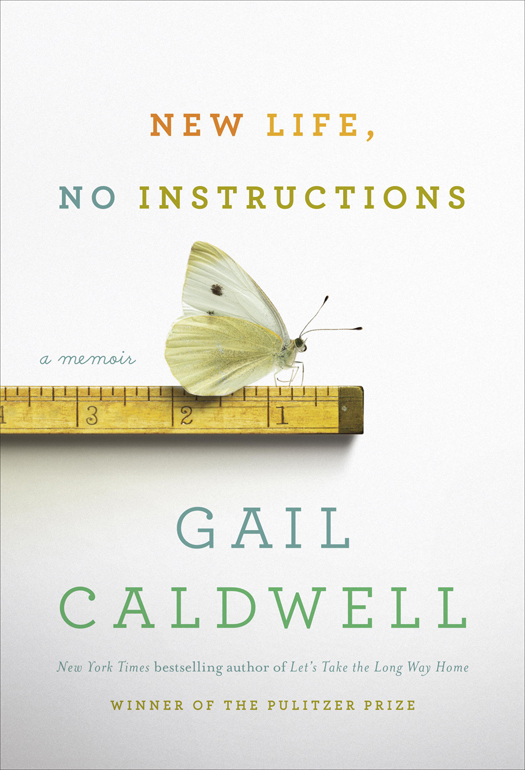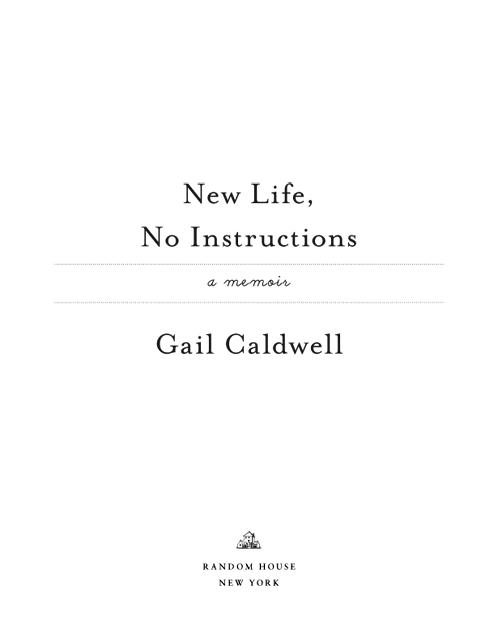Copyright 2014 by Gail Caldwell
All rights reserved.
Published in the United States by Random House, an imprint and division of Random House LLC, a Penguin Random House Company, New York.
R ANDOM H OUSE and the H OUSE colophon are registered trademarks of Random House LLC.
Library of Congress Cataloging-in-Publication Data
Caldwell, Gail.
New life, no instructions : a memoir / by Gail Caldwell.
pages cm
ISBN 978-1-4000-6954-5
eBook ISBN 978-0-679-60442-6
1. Caldwell, Gail. 2. JournalistsUnited StatesBiography. 3. CriticsUnited StatesBiography. 4. Total hip replacement
PatientsBiography. I. Title.
PN4874.C2187A3 2013
070.92dc23
[B]
2013015486
www.atrandom.com
Jacket design: Ben Wiseman
Jacket images: Getty/Stockbyte/ Carl Pendle (butterfly), Getty/Photodisc/ Jeffrey Coolidge (ruler)
v3.1
Contents
[But] its no use going back to yesterday, because I was a different person then.
L EWIS C ARROLL , Alices Adventures in Wonderland
I wonder about the pilgrims at Lourdes and Ftima, the ones who felt the glow and realized they could walk. Was it pure ecstasy from the get-go, or something gradualdoubt turning into hope, then joy? Did they hesitate at all? Maybe they were a little skeptical: OK, so I can walk again, but I should keep the crutches just in case
Grace or hallucination, their encounters gave them something, even a simple dose of courage. The real task must have come later, after they absorbed what had happened: miracle, new life, no instructions.
1.
Cambridge 2011
M y first tip-off that the world had shifted was that the dogs looked lower to the ground. I dismissed the perception as a visual misread: Because I was on crutches and couldnt bend down to touch them, of course they would seem farther away. Then a friend came to visit, a striking woman whom Id always considered tall. She was standing across the living room and I was smiling, happy to have her there, and I thought, Tink is small! And I never realized it before.
The fact is that Tink is about my size, but until that day I had looked up to her in more ways than one. I was just home from five days at New England Baptist Hospital, where the chief of joint reconstruction had built me a new hip and lengthened my right leg by five-eighths of an inch. The measurement sounds deceptively slight, but then pi, unexplained, doesnt mean much, either. What the extended hip bought me was about two inches of additional height, because I was no longer bending forward in pain. It gave my leg something immeasurable: an ability to reach the ground, and the chance and anatomical equipment to walk right for the first time in my life.
Almost as dramatic, at least in the beginning, was the reorientation of my physical self in space. My perspective had been jolted to the point that trees and cars and other markers of street life felt closer to me, within reach in a way they hadnt before. I could sense the effort involved in making these neural adjustments: In a simple movement like a step forward, particularly outside, there would be a lurch of visual confusion, then acceptance. It happened quickly and brilliantly, and my comprehending it changed everything: What had seemed to be mere dizziness was in fact the brains ballet.
These were transient phenomena, the brain being a nimble choreographer of time and space. Within a few weeks I would be accustomed to the additional height and leg length; our bodies, perfect feats of design, respond to what is in front of them, usually without even bothering to let us know. But the dance I found myself doing with the physical world in the first few days and weeks after surgery signaled something larger, more long-lasting, that I would have to learn and relearn in the following year: the notion that life has an agency, some will and forward motion, greater than ones own wish or intention. The force that through the greenfuse drives the flower, Dylan Thomas called it. The idea that the whole blessed shebang doesnt have to be a free fall after all.
I caught polio when I was six months old, in 1951, during one of the last years of the U.S. epidemic, before the vaccines. The virus, which destroys neurons, can lead to full or partial permanent paralysis; it affected the muscles in my right leg, and I didnt walk until I was past the age of two. Still, the mark on my familys door was relatively faint: no March of Dimes crutches or iron lung, just a faltering leg that often went unnoticed. The fact of the diseaseimportant but hardly centralhad long been incorporated into my shorthand self-description: writer, grew up in Texas, slight limp from polio. Part of the story Id told myself all my life was that polio had made me a fighterthat I was hell-bent on being strong because of itand that much was still true. But in the past few years, within the joys and demands of raising a young dog, I had begun to experience pain and lameness Id never known before. The mystery of this decline cast a shroud of defeat over what I feared lay ahead. It seemed that the aftereffects of the disease had re-emerged, ghostly and conniving, like a stalker whod never left town.
And then: A standard X-ray, ordered probably fifteen years after it was called for, revealed that the scaffolding of my hip was a junkyard of bone. However compromised my leg had been by polio, muscles cant work without a structure to hold them up. That I had been walking around at all, I was told, was astoundingand a lot of my recent decline could be addressed by one of the most common surgeries in modern medicine. The restthe retraining and possible strengthening of a rebuilt legwould be up to me.
What do you do when the story changes in midlife? When a tale you have told yourself turns out to be a little untrue, just enough to throw the world off-kilter? Its like leaving the train at the wrong stop: You are still you, but in a new place, there by accident or grace, and you will need your wits about you to proceed.
The revelation that there was a medical solution before mea high-tech fix to pain and infirmity that by now seemed endemic and existentialshifted the angle of my vision in some essential way. It opened up the future and tinted the past, in the way that the unexpected can always disarm the reach of yesterday. Despite the mind-over-matter stoicism of Western thought, the mind cannot grasp the concept of wellness until the body announces it. The idea that I would somehow and someday be able to walk betterto walk without pain or urgent concentrationwas a foreign notion and required a leap of faith. I didnt really believe it until months after surgery, when I saw my right foot climb a stair without asking my brain for permission first. I was being offered a new chapter to an old story, and the beginning of something else altogether.

This rearranging of a life started out, too, as a love storya human-canine one, filled with the usual pratfalls and dropped cues of romance. My four-legged Boswell was a young Samoyed named Tula, a beautiful, irascible sled dog with an intrepid heart and the strength of a tractor. Trying to keep up with hertrying to be a middle-aged athlete in a failing bodywas what first revealed to me the sort of trouble I was in. As she hurled herself through life with me stumbling along behind, she became my divining rod, herding me toward places I could not have gone alone.


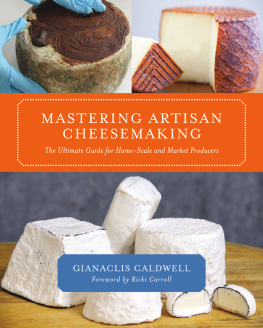



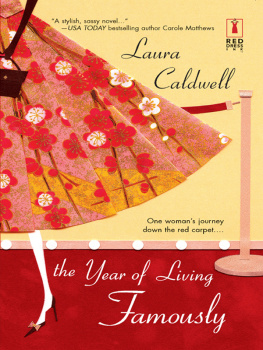
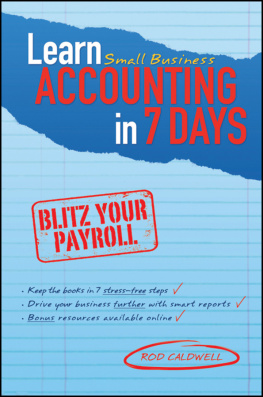


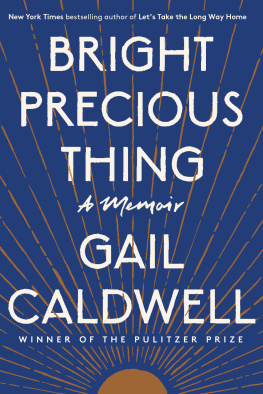
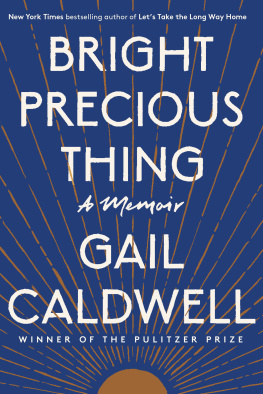

![Chloe Caldwell [Chloe Caldwell] - Women](/uploads/posts/book/114454/thumbs/chloe-caldwell-chloe-caldwell-women.jpg)

